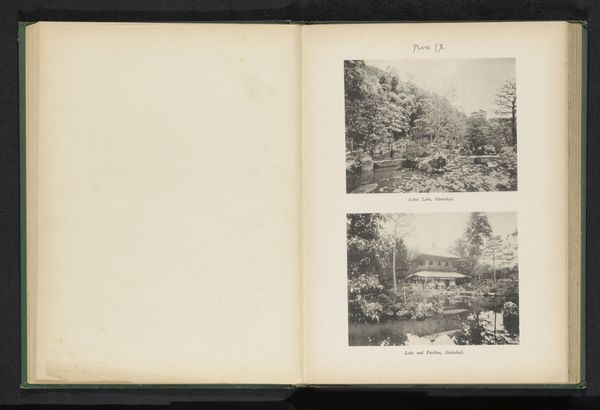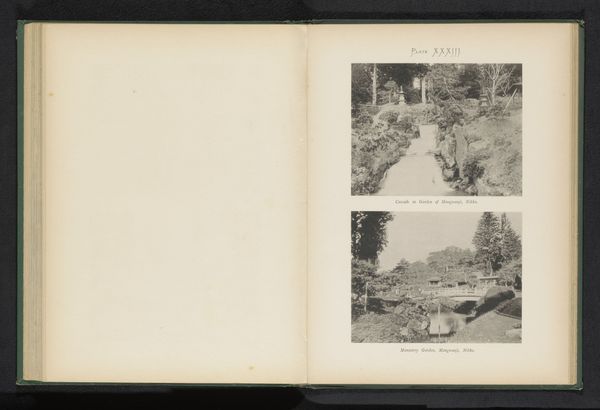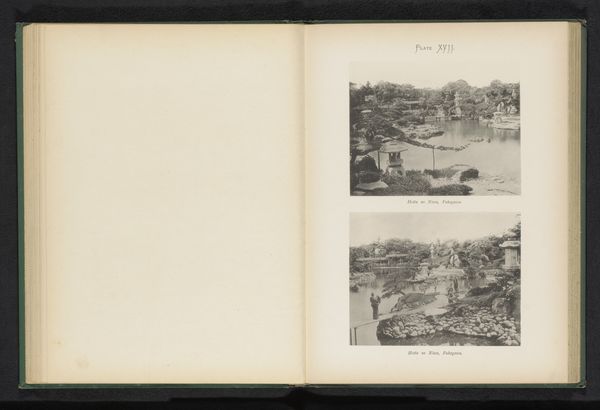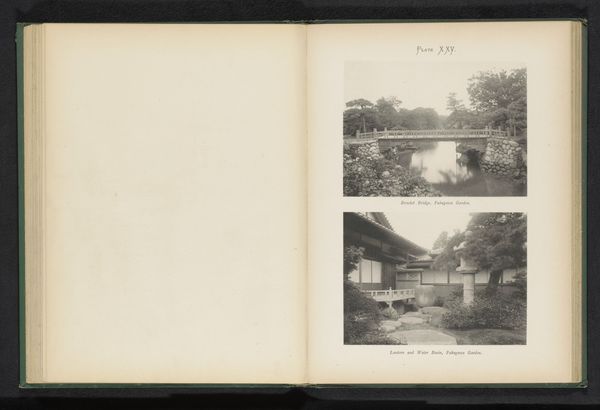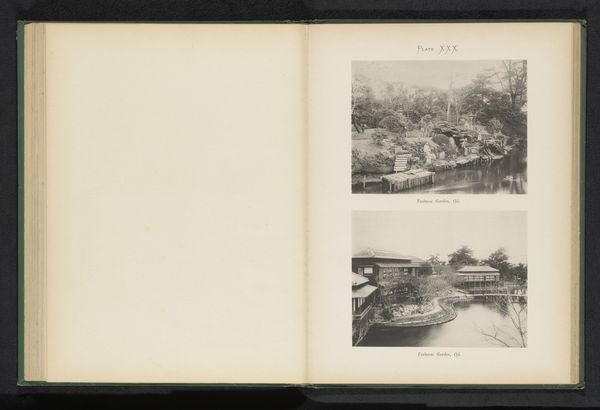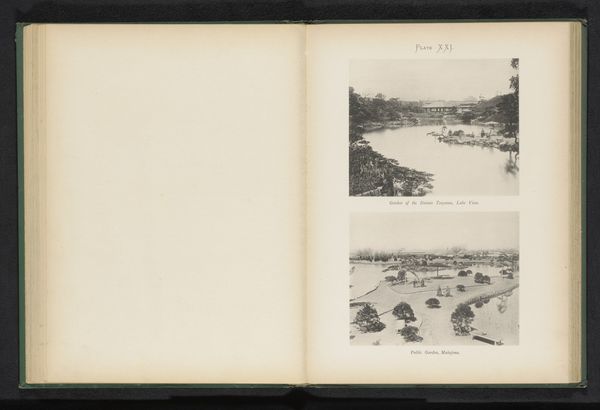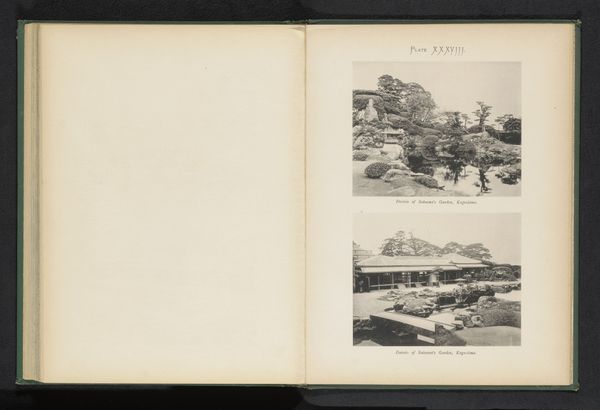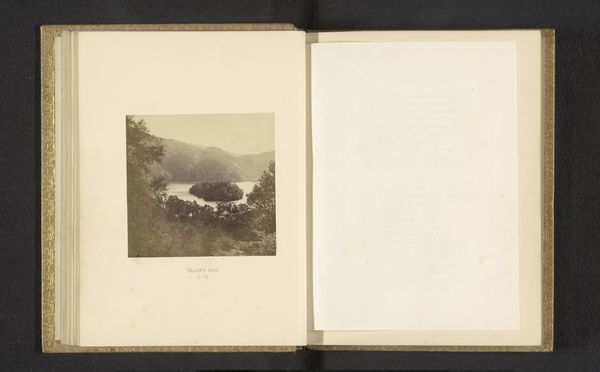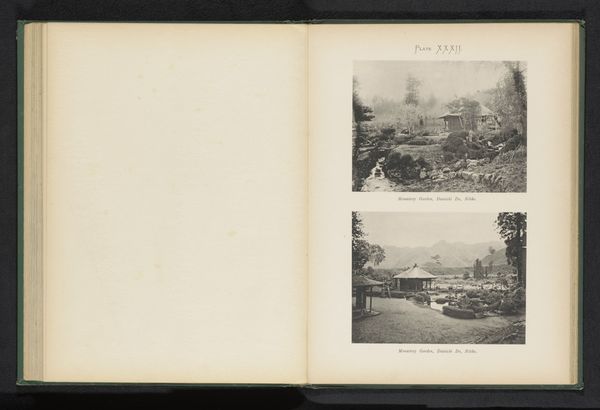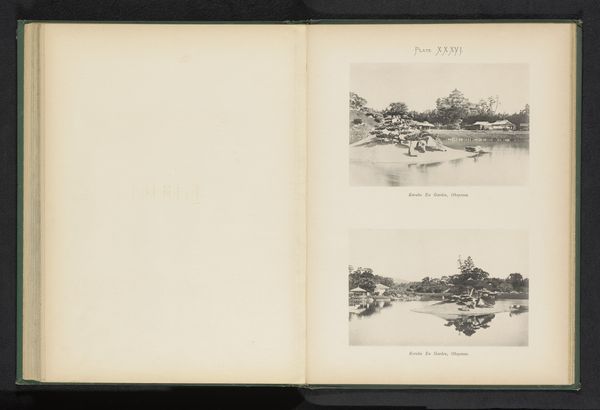
Gezicht op een openbare tuin in Kumamoto en een gezicht op een openbare tuin in Tokyo, Japan before 1893
0:00
0:00
print, photography, albumen-print
# print
#
landscape
#
photography
#
albumen-print
Dimensions: height 356 mm, width 258 mm
Copyright: Rijks Museum: Open Domain
Curator: This is a page from an album of albumen prints by Kazumasa Ogawa, titled "Gezicht op een openbare tuin in Kumamoto en een gezicht op een openbare tuin in Tokyo, Japan," dating to before 1893. Editor: It has a muted, peaceful feel. The stillness of the water is striking in both images, promising tranquility. It reminds me how crucial green spaces are in urban environments. Curator: Absolutely. Consider how the design of these gardens, even captured here, reveals specific Japanese aesthetic and spiritual values. You see, water symbolizes purity, reflection, and transformation. Even the arrangement of the stones has meaning, often representing mountains or natural barriers, creating a microcosm of the natural world. Editor: It speaks to the deeply entrenched relationship between nature and Japanese society. Who has access to that tranquility, and how do we guarantee equal distribution of these resources across all people? Were these truly public spaces, and for whom? Curator: The very term "public garden" presupposes an agenda of democratization, of bringing aesthetics, perhaps even virtue, to all people. Though Ogawa might just be showing beauty. But for many, particularly in late 19th century photography, the camera also allowed colonial powers a form of cultural appropriation and control. Editor: Yes! Landscape photography frequently functioned as a tool of colonial inventory, right? Recording and framing the “other” to make it seem knowable, and therefore controllable. I'd be interested in digging into that specific tension in Ogawa's role as both an insider and someone implicated in larger systems of representation. Curator: I'm taken with the sense of enduring symbolism, whether consciously rendered or not. Japanese garden design principles still influence landscape architecture globally, continuing this dialogue between nature, culture, and well-being across time. Editor: Absolutely. It's easy to be seduced by the peaceful aesthetic, but we have to engage actively with those power dynamics as well. Understanding the social fabric in which art is made, and the context for this photograph and its dissemination allows us a more ethical engagement with works like this.
Comments
No comments
Be the first to comment and join the conversation on the ultimate creative platform.
